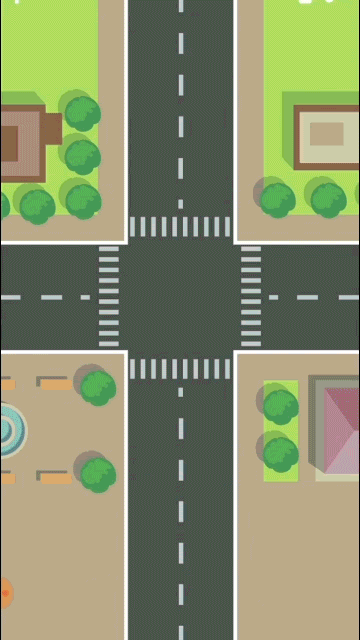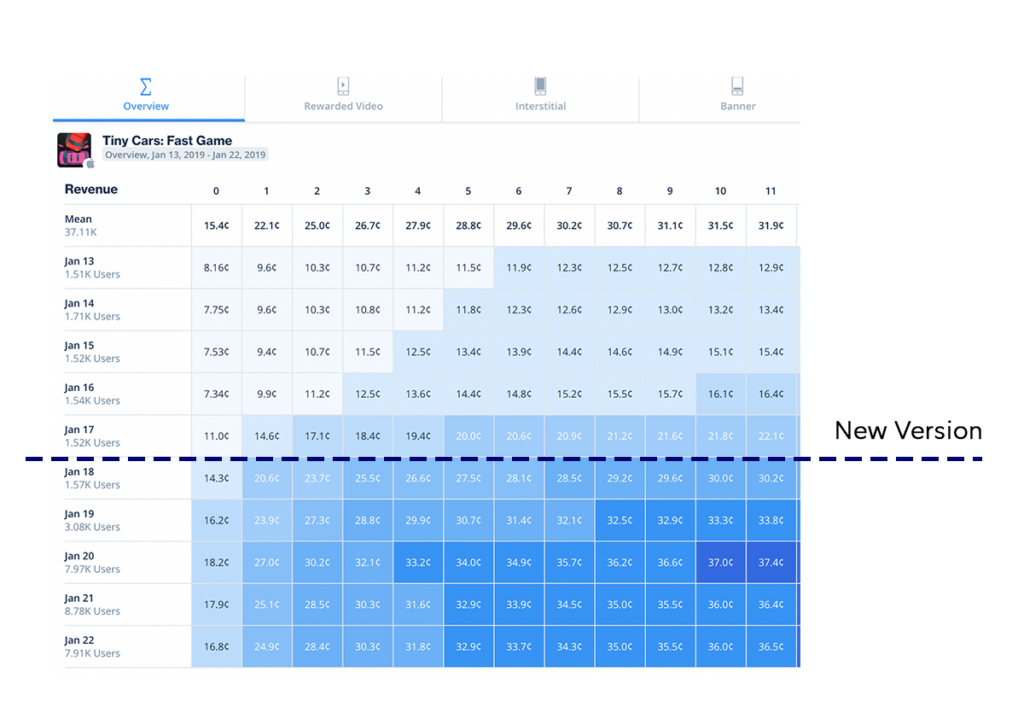· 7 min read
Homa Games Spotlight – Taking Your Game From Good To Great

Kelly Chiu
Community Manager at GameAnalytics
After the launch of one of their biggest games, I spoke with Vincent Hart de Keating, Co-Founder & Managing Director of Homa Games, to learn how they improved their now biggest hit, Tiny Cars, and key lessons they learned on the way.
Thanks for chatting with us today. Before we get started, can you give us a bit of background on Homa? What do you guys do?
Sure thing. At Homa Games, we consider ourselves experts when it comes to mobile game publishing, especially within the hyper-casual space.
We actually only started about a year ago (mid-2018) as a fairly small team. But in the space of just a few months, our team grew, with new members in game design, data analysis, motion design, and mobile development (making the ultimate A-team for publishing). Since then, we’ve managed to publish over 10 games, including 4 major hits: Balls vs Lasers, Tiny Cars, Tower Color, and Idle World.
And tell us a bit about Tiny Cars. How did you get started on this project?
Tiny Cars is a special game of ours, as it’s probably one of our biggest hits (having hit #3 in the U.S. App Store). We’re incredibly proud of this achievement, but don’t get me wrong, a lot of work and iterations went into this title from both the developer, Brian Rouleau from Studio Rouleau, and our own team. At one point, we nearly dropped the game altogether (although I’m glad we didn’t).

Above: Our first prototype of the concept
We started with a simple concept at the beginning. After working on it with Studio Rouleau for two days, we turned the concept into a prototype. The idea was that users would have to manage cars at an intersection, and earn points each time a car got through safely (and obviously, didn’t crash). Users could even replay the level over and over again to get a better score, but that’s as far as the concept went.
When looking at the results, our D1 retention was 42%, D3 was 15% and D7 was 6%.
And if you know anything about retention, then you’ll know that this wasn’t great news for us. Interestingly, the CPI for the campaigns was below $0.20, which meant we had a great concept that people wanted to play, but the core loop was lacking.
So with such a low CPI, we decided to set ourselves a new goal: rework and focus on our core loop, so we could get better retention and session time.
But shouldn’t you ‘kill your darlings’ if your retention is so low? Why did you decide to carry on with this title? And how did you go about this?
It’s true, and I’ve said this more times than I can count, but you should really consider dropping your game if retention is low. Which is pretty much what we did, except focus back on that core concept (thanks to that nifty CPI).
We had a lot of work to do though (since we pretty much went back to step 1), so it’s probably easier for me to explain this in phases. Let’s agree the first prototype we created was Phase 1. Here’s what we did next:
Phase 2: Tackling the basics
We knew we had a good concept, and that it was lacking content. But what direction should we go in? How could we improve this game? We had a few different routes to go down, but here are 2 things we started with:
- We added more levels
- Which our users could unlock (ultimately improving the balance of the game).
- We added ads
- Which is really important in order to see how the users reacted (we measured their reaction by looking at their retention rate and average session length).
After this round, the metrics were performing much better, but it still wasn’t quite up to scratch.
Phase 3: Developing the features
After some more testing, we realized that it was difficult for our players to understand how they can unlock more levels. So, we added a ‘star’ system, that basically gave them the opportunity to earn a star for every car that crossed the road. And once they’ve got enough stars, then they unlocked the next level.
After 10 more iterations, the retention rate still wasn’t as great as we had hoped. But, the session time was finally promising. The CPI also improved (even more), so we definitely knew we were on the right track – it just needed a bit more work.
Wow, that’s a lot of experimentation on a hyper-casual game. Were you close to finishing?
Not yet. In short, we still had a lot to do. All of our results continued to let us know that our concept was great, but the gameplay still wasn’t there. So we experimented even more with our prototype…
What changes did you make? And what was the outcome?
We changed and added quite a bit. The three core changes we implemented were:
- Added even more levels
- We added approximately 60 – 70 levels to our game to give it a more complex roadmap that included new obstacles, weather, and changing landscapes.
- In-Game Currency
- We added soft-currency into the game. But we needed to give something that people could buy. Cars were the obvious choice, but to incentivize this some more, we made it so the better the car, the more money you got when it crossed the road.
- A progression bar
- The game objective has always stayed the same (get the car safely across the road). But now, that car has a progression bar. Similar to in-game currency, the better the car, the quicker the progression bar fills, and the sooner the player beats the level.
We also jazzed up the design, measured the ideal time per level (which was around 14 seconds), and created a lot more levels to keep users engaged.
That’s a lot of changes. What were the results of this? And how did you use GameAnalytics?
So, before we share the results, I’ll quickly sum up what our strategy was for the level roadmap. As I mentioned, we decided to add between 50 to 60 unique levels to the game, to learn at which level our users stop playing. The levels with the highest drop off rate would be pushed to the end of the game, and the best performing levels would be at the beginning.
Our goal was to have our players start with a really good experience, fall in love, and get hooked by the game. So, the best levels needed to go first.
And the results? Well, after all the changes we did, they were finally what we wanted:
- RRD1 = 50%
- RRD3 = 26%
- RRD7 = 15%
Here’s a summary of the new time per session. With the changes we made, we doubled the session time and the number of impressions per session.

And here’s a glimpse of the revenues per day played. You can see the impact that the changes had on our revenue. If we hadn’t made these changes, then we definitely wouldn’t have seen these results.

That’s brilliant to hear. Thanks for chatting with us today and sharing your story. Before you go, would you mind sharing with us your biggest piece of advice to new developers?
If you have a good concept and a promising CPI, don’t hesitate to change the meta of the game. You don’t need to scrap it entirely, but maybe just a little bit of tweaking and TLC (or quite a bit, in our case).
That being said, we are quite an established publisher with a big team, so do make sure you consider what resources you have.
If you would like to see the final version of the game, you can download it on the iOS app store here, and the Google store here. We also ran an event with Homa Games. Here’s their talk on Idle World.